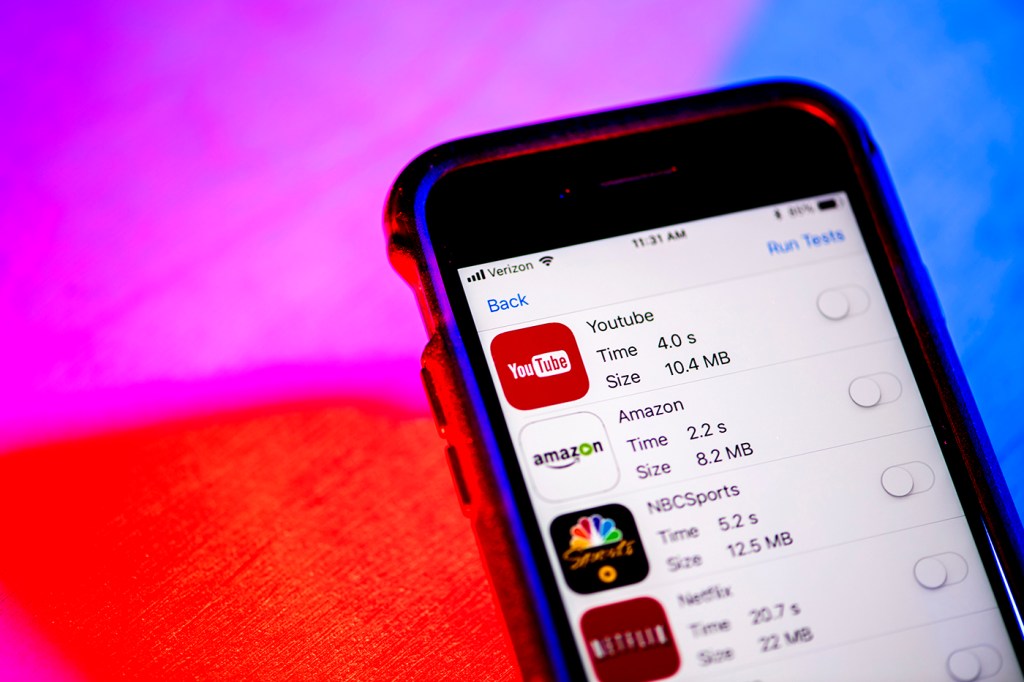New research shows that, post net neutrality, internet providers are slowing down your streaming

Have you ever noticed web content performing poorly out of the blue? Video footage becomes blurry. Web pages take longer to load.
If so, your internet service provider might be slowing down your data on purpose. It’s known as “throttling,” and it’s a way for a provider to ease congested network traffic.
But when one type of network traffic—say, video streaming—is throttled more than another, this is called differentiation. And according to Dave Choffnes, assistant professor of computer and information science at Northeastern, differentiation is also “what most people would refer to as a net neutrality violation.”
New net neutrality rules, born in 2015 and struck down two years later, were conceived to protect consumers’ ability to access all online information equally. During this short lifespan, Choffnes and two Northeastern students developed an app that could track violations of net neutrality.
Apple originally blocked the app, now called Wehe, from its App Store. But after ensuing media coverage caused a sharp increase in the number of Wehe users, Choffnes found himself with a wealth of data.
This data is now the subject of new research set to publish in early 2019, but its findings are already available—and making waves.
They’re all in on it
Working with a team from the University of Massachusetts Amherst, Choffnes confirmed a sneaking suspicion: “Nearly every U.S. cell provider is doing throttling.”
Using a previously established, peer-reviewed technique, the team conducted more than half a million data traffic tests across 161 countries. From this data, the team found that internet service providers are “giving a fixed amount of bandwidth—typically something in the range of one and a half megabits per second to four megabits per second—to video traffic, but they don’t impose these limits on other network traffic.”
And because of differences in their users’ mobile data plans, internet service providers such as T-Mobile might throttle one user’s internet traffic but not the other’s, said Choffnes.
The team also observed that this behavior doesn’t seem to have a clear rationale.
“There’s no evidence that any of these policies are only happening during network overload,” said Choffnes. “They’re throttling video traffic even when the network doesn’t need to. It happens 24/7, and in every region where we have tests.”
What does this mean for me?
If your data traffic is being throttled, you’re bound to notice.
“It would be like watching a standard-definition television that’s 13 inches big from across the room,” said Choffnes. However, due to variability in the apps themselves, no single experience is ubiquitous.
Choffnes said content providers themselves can impose limits. Take the Netflix app, which defaults to low-quality video resolution. Unless they manually change this setting, said Choffnes, “most users, even without throttling, are going to see low-resolution video.”
However, the intention of Choffnes’s study was “to test whether an internet service provider is giving better or worse performance to one app’s network traffic versus another.” This happens outside of a user’s preference settings—as well as outside their awareness.
What’s the future of differentiation?
Choffnes contacted the Federal Trade Commission to report these findings, and he intends to continue collecting Wehe data to further supplement his research.
In the meantime, he offered advice to consumers on how they can find their footing in the ever-shifting landscape of net neutrality.
To start, he said, consider an internet service provider that doesn’t throttle. For example, if high-resolution video is a priority, research the megabits-per-second caps of different providers. After making the switch, cross-check a company’s specs using the Wehe app.
And, Choffnes said, don’t rule out the legal system. “If you think that net neutrality is something that should become law and not be subject to the whims of each administration and who they appoint to the FCC,” he said, “then encourage your representatives to pass effective and well-thought-out legislation that finally addresses this issue of net neutrality.”
Internet service providers have their own homework.
Choffnes urges providers to “only use throttling when you need to”—that is, only when a network is truly overloaded. If they did this, all users would see their traffic affected equally, regardless of whether they’re customers of T-Mobile or Boost.
Putting the management responsibility on internet service providers takes the burden off content providers. A company such as Google might have the resources and engineering muscle to adjust their own video quality as the need arises, but that’s a less realistic feat for “your next video startup with a skeleton crew that’s just trying to make things work.”
In a world of tech incumbents and differentiation, fairness is scarce. But with more responsibility placed on the internet service providers themselves, users could find themselves in a new age.
“This isn’t really about winners or losers,” said Choffnes. “If the network has enough resources to meet demand, everybody gets what they want.”





